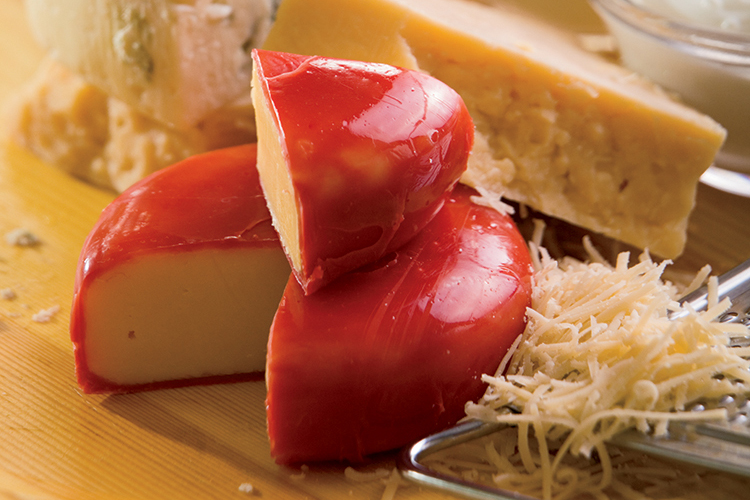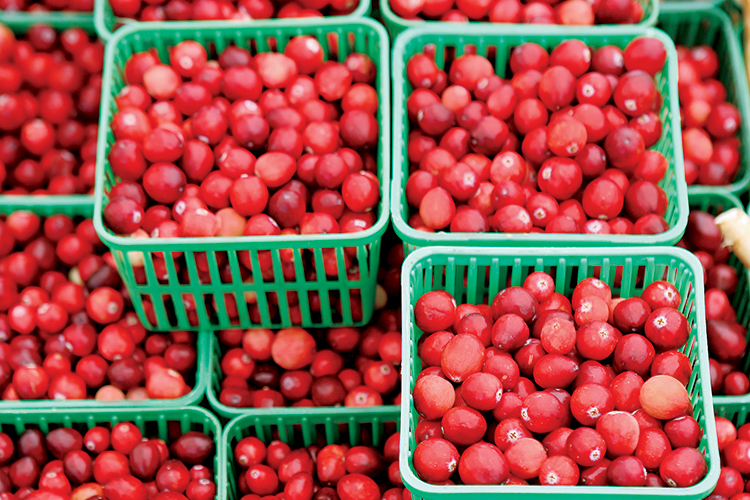Home > Wisconsin > Wisconsin Crops & Livestock > Wisconsin Agriculture Overview 2015
Wisconsin Agriculture Overview 2015
In partnership with: Wisconsin Department of Agriculture, Trade and Consumer Protection.

For the state of Wisconsin, agriculture is much more than a means to provide food. While that’s an extremely important aspect, the diverse industry is a key provider of jobs for Wisconsin citizens. Nearly 12 percent, or 413,500 people, in Wisconsin’s workforce make a living off of agriculture in some of the state’s top sectors including dairy products, cattle and calves, and cranberries. According to a report compiled by the University of Wisconsin Extension, every job in agriculture supports 1.46 jobs elsewhere in the state.
Agriculture contributes $88.3 billion to Wisconsin’s economy each year. A large part comes from the state’s top commodity – dairy products. Known as America’s Dairyland, Wisconsin leads the nation in cheese production, accounting for 26 percent of all U.S. production.
In terms of employment, more Wisconsinites work in the dairy industry than any other, accounting for nearly 20 percent of all Wisconsin agriculture jobs and employing more than 78,900 people in the state.
Hardworking dairy farmers and cheesemakers produced 2.86 billion pounds of cheese in 2013, which included more than 600 varieties, types and styles – almost double the number of any other state.
But dairy isn’t the only industry sustaining Wisconsin agriculture. Cranberries are the state’s largest fruit crop. Wisconsin produces 67 percent of the nation’s cranberries, contributing $300 million to state’s economy annually and supporting 3,400 jobs. The Badger Sate is also No. 2 in the U.S. for total production and value of production for major processing vegetables including peas, cucumbers, snap beans, carrots and sweet corn.
![Wisconsin Farm Expenditures [INFOGRAPHIC]](https://eadn-wc01-4177395.nxedge.io/wp-content/uploads/2020/05/Screen-Shot-2014-10-17-at-11.36.03-AM.png)
Wisconsin’s other agribusinesses and processing plants are a key factor for the industry as well, focusing on growth and innovation.
Several of the nation’s leading genetics companies for dairy and beef cattle, agriculture equipment manufacturing companies and the regional convenience store Kwik-Trip are headquartered in Wisconsin, providing numerous jobs and economic support.
In fact, the majority of employment opportunities in Wisconsin’s vast agriculture industry fall within management and business categories.
Standing Tall
Mighty forests stand tall in Wisconsin. With more than 16 million acres of forested land, including both private and managed land, forestry is a key sector for the state.
These forests have a significant impact on the quality of life in the Badger State, providing clean air and water, plus habitats for wildlife and hundreds of wood and paper products.
The state’s Division of Forestry works hard, doing everything possible to protect these natural resources. Some of their efforts include working with communities to manage and prevent emerald ash borer (a deadly forest pest) infestations, aligning fire protection resources with the state’s fire risk landscapes and registering a school forest in every county, among many others.
Discover more about the impact of Wisconsin’s forests and their forestry division at dnr.wi.gov.
A Wide Variety
When you think of Wisconsin agriculture, dairy products are probably the first things that come to mind. But the Badger State supplies a wide variety of products, including some atypical commodities such as mink, mint and trout.
Wisconsin is the No. 1 producer of mink pelts in the U.S. In 2013, the state produced more than 1 million pelts. Mink farmers breed selectively to develop pelt colors, but the most popular color is black.
The Badger State is also a top producer of mint, specifically for oil. The state produces both peppermint and spearmint, and in 2013, farmers produced 209,300 pounds of oil.
Wisconsin is a key player in the trout industry. Trout producers reported $1.6 million in sales in 2013. Aquaculture as a whole in Wisconsin contributes $21 million to the economy. Trout ranks as the No. 2 aquaculture product produced in the state.
Sweet Success
2014 was a sweet season for Wisconsin’s maple syrup producers. The state produced 200,000 gallons of the sticky substance.
Usually, about 40 gallons of sap are needed to make one gallon of syrup, but it depends on the sugar content of sap. The number of maple syrup taps exceeded 700,000 during the 2014 maple syrup season. Pure maple syrup is only made on a commercial scale in North America and is generally produced in the states and provinces that surround the Great Lakes and the St. Lawrence River to the Atlantic Ocean.




